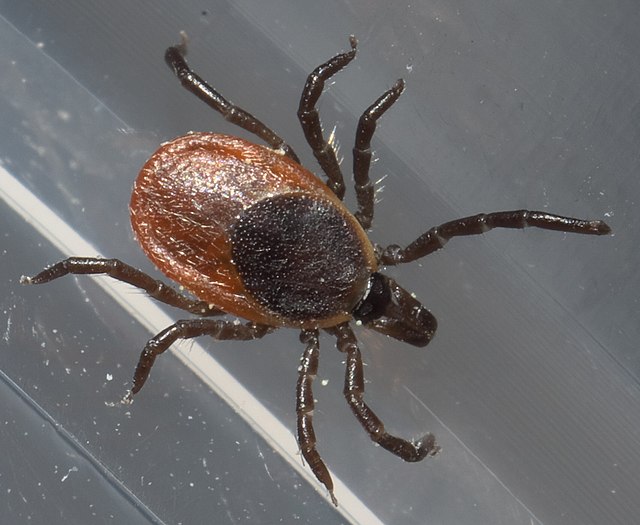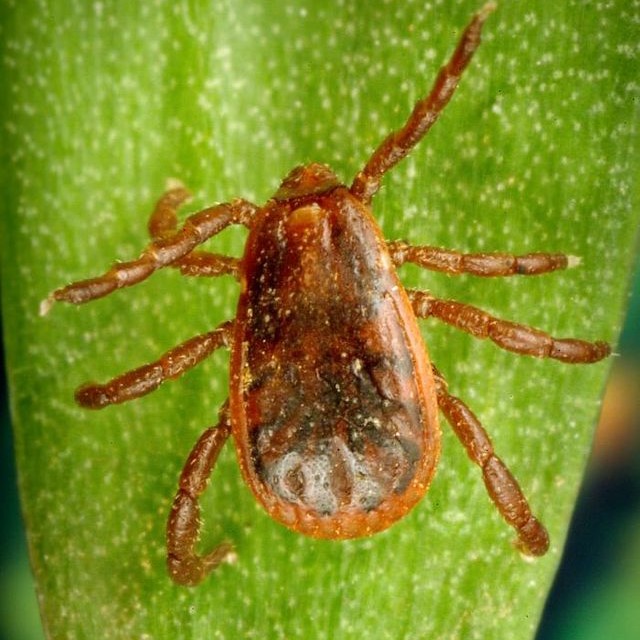Many people think that Texas isn’t a suitable environment for ticks. Sure, it may not have the highest number of ticks in the country (by a wide margin), but there are certainly ticks (and tick-borne diseases) in the state. Current research suggests multiple tick-borne illnesses, including Lyme disease, have been found in Texas.
The belief that Texas is tick-free has led to some physicians under-diagnosing Lyme disease, as well as other tick-borne illnesses. It’s important to be well-informed about ticks to prevent bites and to know what to do if a bite occurs.
Types of Ticks
There are actually hundreds of different types of ticks. Not all ticks are dangerous, and you’ll never encounter most species. Each type of tick has its own climate and ecosystem requirements, so you definitely won’t find all of them in Texas.
That said, there are several types of ticks Texans should look out for. Here are four disease-carrying ticks that you should do your best to avoid.
Lone-Star Tick (Amblyomma Americanum)

Lone-star ticks in the Lone-Star State? That’s right. These pesky arachnids are in Texas, and they can be dangerous. They’re found mostly in Southern and Eastern states, so despite the name, you can still encounter them outside of Texas. The name actually comes from the tick’s appearance.
Female ticks have brown bodies and a large white mark on their backs that resembles a star. They’re about 3mm in size. Male ticks are smaller and have white markings around the perimeter of their bodies rather than in the center.
These ticks are aggressive biters. They actively seek hosts. They’re attracted to carbon dioxide and vibration.
Diseases carried by lone-star ticks include:
- Ehrlichiosis
- Tularemia
- Rocky Mountain
- Spotted Fever
Southern tick-associated rash illness (STARI) - Bourbon virus
- Heartland virus
- Alpha-gal syndrome
Black-Legged Tick (Ixodes Scapularis)

Black-legged ticks (Ixodes Scapularis) are found within midwestern, western, northeastern, and southern regions of the United States. In other words, they’re incredibly common. They range from ~3-5mm in size.
They have long, narrow mouthparts and black legs. Adult females have an orange-red body that surrounds a black crescent-shaped back. Adult males are fully black.
Diseases carried by black-legged ticks include:
- Anaplasmosis
- Babesiosis
- Lyme disease
Bourbon virus - Powassan virus
- Ehrlichiosis
Brown Dog Tick (Rhipicephalus Sanguineus)

Brown dog ticks can be found in the southeastern and northeastern parts of the United States. They are reddish-brown with spherical bodies and brown legs. They are roughly 3-12mm in size when fed. Brown dog ticks love the indoors, and as the name suggests, they primarily feed on canines.
Diseases carried by brown dog ticks include:
- Rocky Mountain Spotted Fever
- Canine ehrlichiosis
- Canine babesiosis
American Dog Tick (Dermacentor Variabilis)

You can find these ticks in the central, western, eastern, and southern parts of the United States. They are about 2-5mm in size. They have white/silver markings covering their backs. They also have festoons (or grooves) along the edges of their body. You are most likely to encounter these ticks during spring and summer, but again, they’re more likely to bite dogs than humans.
Diseases carried by American dog ticks include:
- Rocky Mountain Spotted Fever
- Tularemia
- Canine ehrlichiosis
How to Prevent Ticks and Tick Bites
Prevention of ticks can be a difficult and complex task depending on where you live.
In places like Texas, where ticks have not overrun the state, it is still possible to keep the tick population at a manageable and safe level at home. Do your best to keep your grass trimmed, and consider hiring a pest control expert for home tick prevention.
If you are someone who enjoys the outdoors, even just for brisk walks, it’s essential to always perform proper tick checks on yourself, your family members, and your pets. Nymph ticks (or immature ticks) are incredibly small, the size of a pinhead. Their small sizes allow them to be incognito on a person’s or animal’s body for very long periods of time. Unfortunately, this increases the chance of disease transmission.
Common places to check include the backs of the knees, behind the ears, armpits, groin area, scalp, nape, and abdomen. Check outdoors once, and then, when you’re inside, check again when you’re able to disrobe. If you have a long-haired pet, you may want to use a fine-toothed comb to check for ticks.
There are also some great tick repellents on the market that range from chemical-based to purely botanical. Popular repellents that are efficient and effective are permethrin, picaridin, and of course, DEET. Please keep in mind that each product has specifications for suitable ages as well as methods to use it effectively.
Basic Tick Removal
Uh oh, you’ve found a tick, and it’s already latched on! Now what?
If you like to go outside in a tick-prone area, you may want to keep tick tweezers nearby. Of course, normal tweezers will work, but having a designated tool is always going to be best. That way, you aren’t dirtying up your normal tweezers with tick removal.
Proper removal of the tick is very important to prevent potential disease transmission. To begin, sterilize the area around the tick with alcohol. Never twist the tick or use excessive force. Instead, grasp the tick as close to the skin as possible. Slowly pull straight up from the area until the tick is out of the skin. Sometimes, the head may remain. This isn’t ideal, but getting rid of the body is what’s important.
If you remove the tick too aggressively, it can regurgitate while it’s latched on. This could increase your chance of catching a tick-borne disease.

What to Do After a Tick Bite
After getting bitten, try to keep the tick. There are many tick-testing services available, including free tick-testing, which many state health departments offer. If you get the tick tested, you can identify whether or not you’re at risk for common diseases.
Most people will wait until symptoms occur. This can be dangerous because illnesses like Lyme disease can be more difficult to treat the longer you wait. Contacting your doctor and following their guidelines is the best thing you can do in the meantime if you have sent out your tick to be tested for pathogens. If you were unable to keep the tick and send it for testing, keep an eye on the tick bite and try to identify potential symptoms if they arise.
Remember to use our code WAG1 when ordering to get 10% off at TickChecker!





